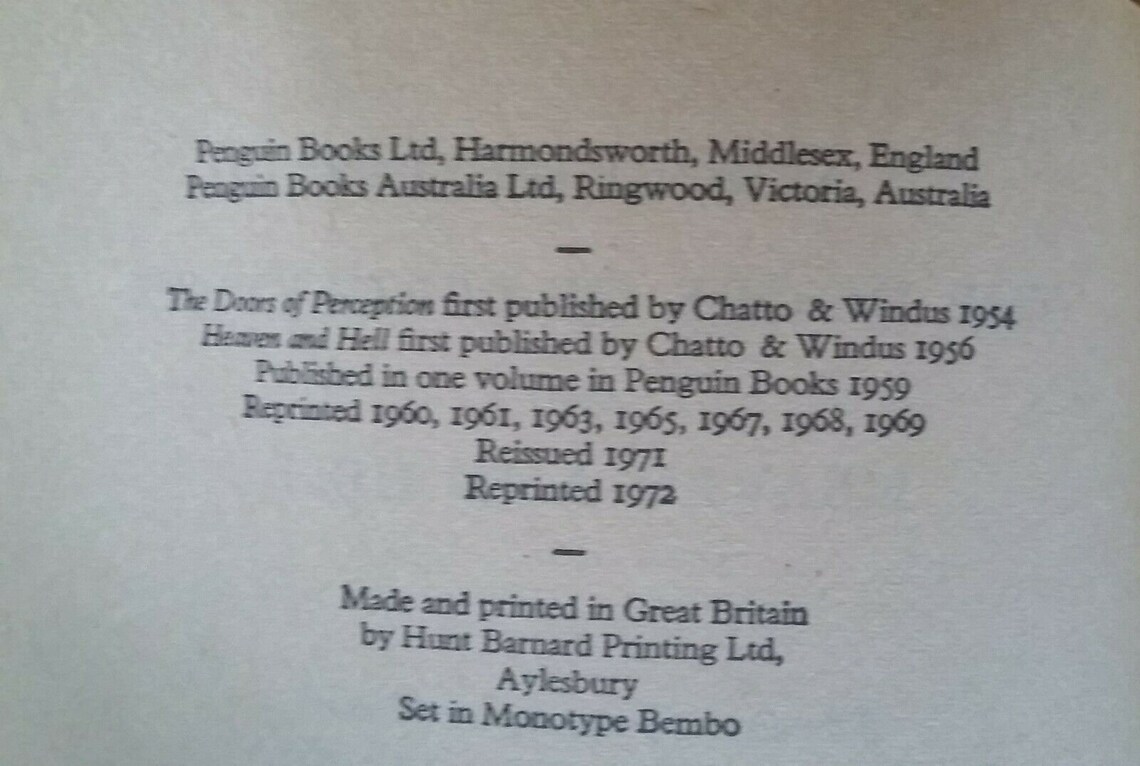
Still, for the persistent, this is a worthwhile sequel, and it is readily obvious why the two are so often packaged together. One might almost suppose that the drugs had not yet worn off while he wrote this one. Even with handy art references, the latter is still the more difficult read, with its several tangential appendices and textual digressions. This is where, I believe, a majority of readers are likely to get lost, and thus explains why there are far more extant reviews of the former essay than of the latter.

Heaven and Hell goes on to develop this thesis by comparing the visions induced by exogenous chemicals to the more visionary pieces of art throughout history, as well as elaborating on the religio-spiritual theme.

Why, after all, should one need to starve or abase oneself for months and years to achieve such states when the same experience, or a reasonable simulacrum, can be had for the cost of a drug and perhaps a mild hangover? Instead, while making the case for the legitimacy of drug use, Doors offers a hypothesis for the mechanism of the experience via the well known reference to Blake and the then-current state of neuro-biological research to wit, that ordinary perception is a matter of the mind filtering data for survival, while transformed or visionary experience-whether achieved through asceticism, art, or chemistry-opens the mind to all the data available, regardless of its mere survival value, thus allowing one to see through the ordinary to a truer vision of reality. Leary who much later reduced the matter to such a simple and simplistic premise, and even he had more than that to say to those who were willing and able to delve beneath the surface. Both essays are often seen as little more than an apologia for "drug experimentation." While that is certainly an element of both, it can hardly be taken as Huxley's central point. Remember Laurent Tailhade? Yeah, me neither.įrankly, with the state of Liberal Arts education today, I have a hard time believing that much of anyone who has read this in the last 30-40 years has understood but a fraction of it-and reading over the reviews I can find bears this out. At the very least, this book would benefit greatly from extensive illustration: the range of artistic works referenced, from Caravaggio to Millais to Vermeer, is sure to baffle most modern readers without a degree in Art History. Over the two months I spent on this volume, on and off, I believe two-thirds of my time was spent on the Internet looking up references. This was the first I've read in a long time where I found myself desperately longing, not only for an electronic edition, but for a fully hypertextual version, rich with links.

Generally, I greatly prefer to read books in the dead-trees format-actual paper in my hand.


 0 kommentar(er)
0 kommentar(er)
